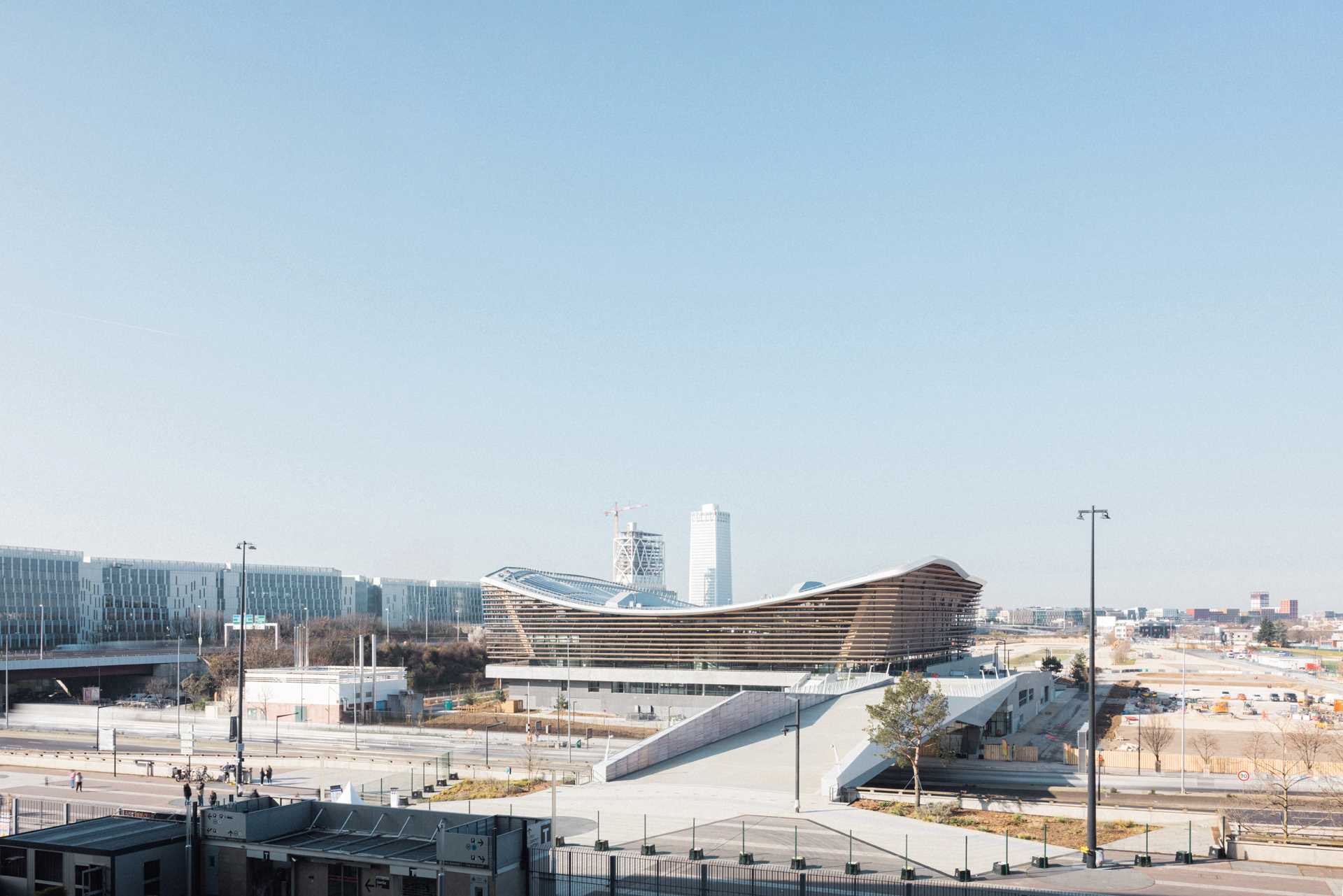
The Olympic Games Paris 2024 has been hailed as the most sustainable yet, with only two newbuilding projects constructed. We look at one of them – the Aquatic Centre in Saint-Denis – andexamine its legacy for the area
IN September 2017, the International Olympic Committee announced that Paris would host the 2024 Olympic Games, marking the city's third time hosting after a century, with the last games held in 1924. The 2024 games are positioned to be the most sustainable yet, with only two new construction projects; the Aquatics Centre and the Olympic Village. The bid to design Paris 2024's sole permanent sports facility was fiercely contested and ultimately won by Dutch architectural firm VenhoevenCS, in collaboration with French partner Ateliers 2/3/4. Lead architects Cécilia Gross and Laure Mériaud embraced the challenge to create a sustainable, impactful design which would also leave a legacy for the neighbourhood. Located across the A1 from the Stade de France, the €175 million aquatics centre embodies the ethos of these Olympics: sustainable and subtly impressive.
The building is connected to the Saint-Denis area by an 18-meter-wide footbridge, which will feature cycle lanes and green spaces. ‘It’s going to be a green environment, which is rare in Paris’, says Gross. The new building also addresses a critical need in Saint-Denis, an area with low swimming proficiency among its youth. Mériaud says: ‘The fact that the centre is located in this area is very important, as Saint-Denis is an area with a lot of social issues. They don’t have swimming pools, so children in this area don’t know how to swim.
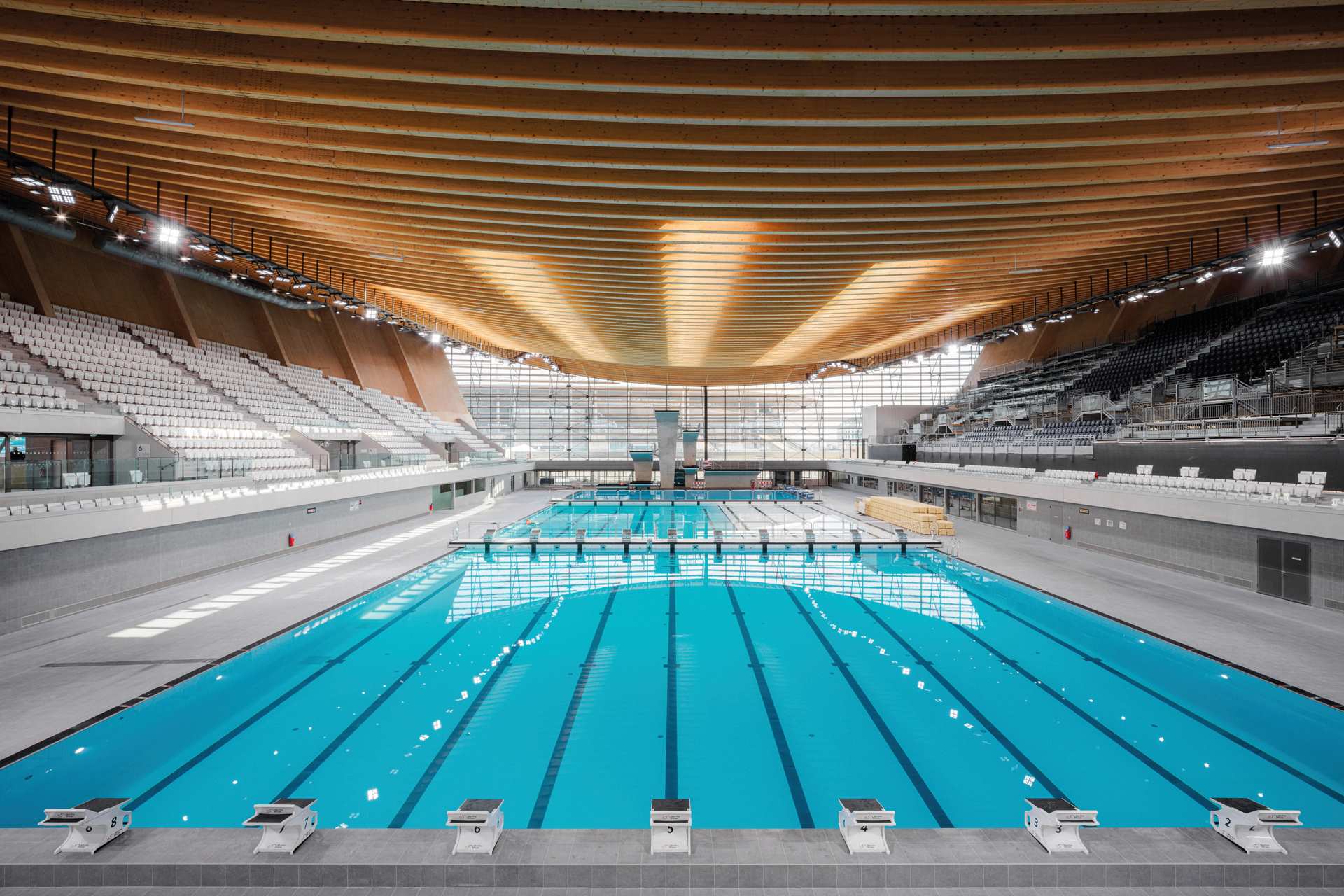
We thought first for the future and then how it can be designed for the Olympic games.’ Winner of the Le Grand Prix du Grand Paris 2023 and Grand Prix BIM d’Or, the building is designed for multifunctional use. During the Games, it will host competitions for diving, synchronised swimming and water polo. Post-Games, it will serve as a swim training facility during the Paralympics and remain a sports centre for the neighbourhood. Gross adds: Legacy was the motivator. I think that’s also a strong point of the design. It’s simple and powerful. The Olympic Games of 2024 are going to be the most sustainable games – that’s the target – and for us sustainability is in our DNA and we generate our architecture from it.’
The building’s design
The centre features a slender roof supported by timber columns that lean outward, resembling a giant wave. Inside, wood forms the main structure, featuring a suspended roof with minimal height that minimises air conditioning needs over 50 years. By using wood for the structure, the centre doubles the required minimum percentage of bio-sourced materials. Two glazed walls offering views of the stadium and park, while horizontal wooden fins shade the interior.
‘The fact that the centre is located in this area is very important, as Saint-Denis is an area with a lot of social issues… We thought first for the futureand then how it can be designed for the Olympic games’
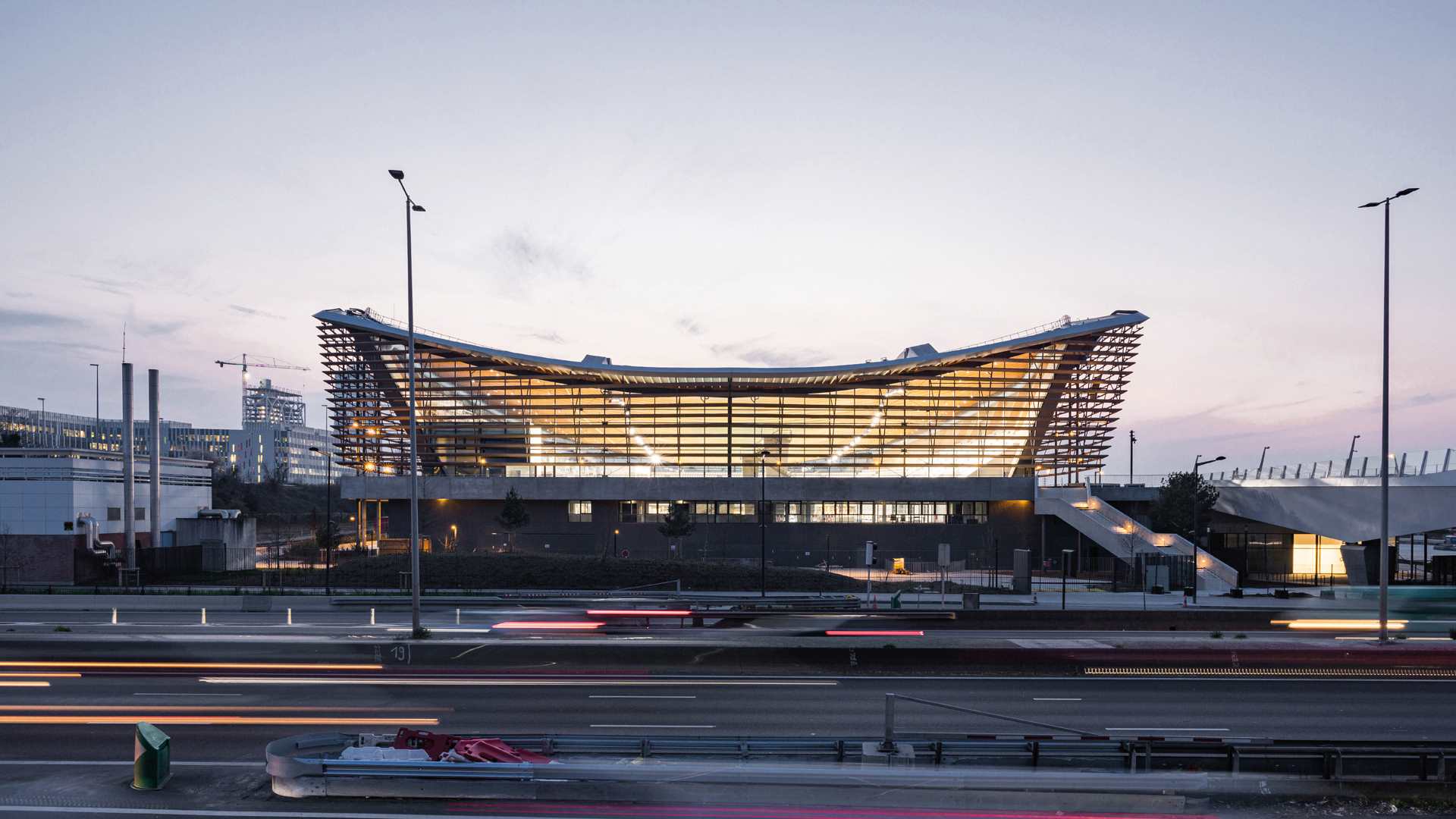
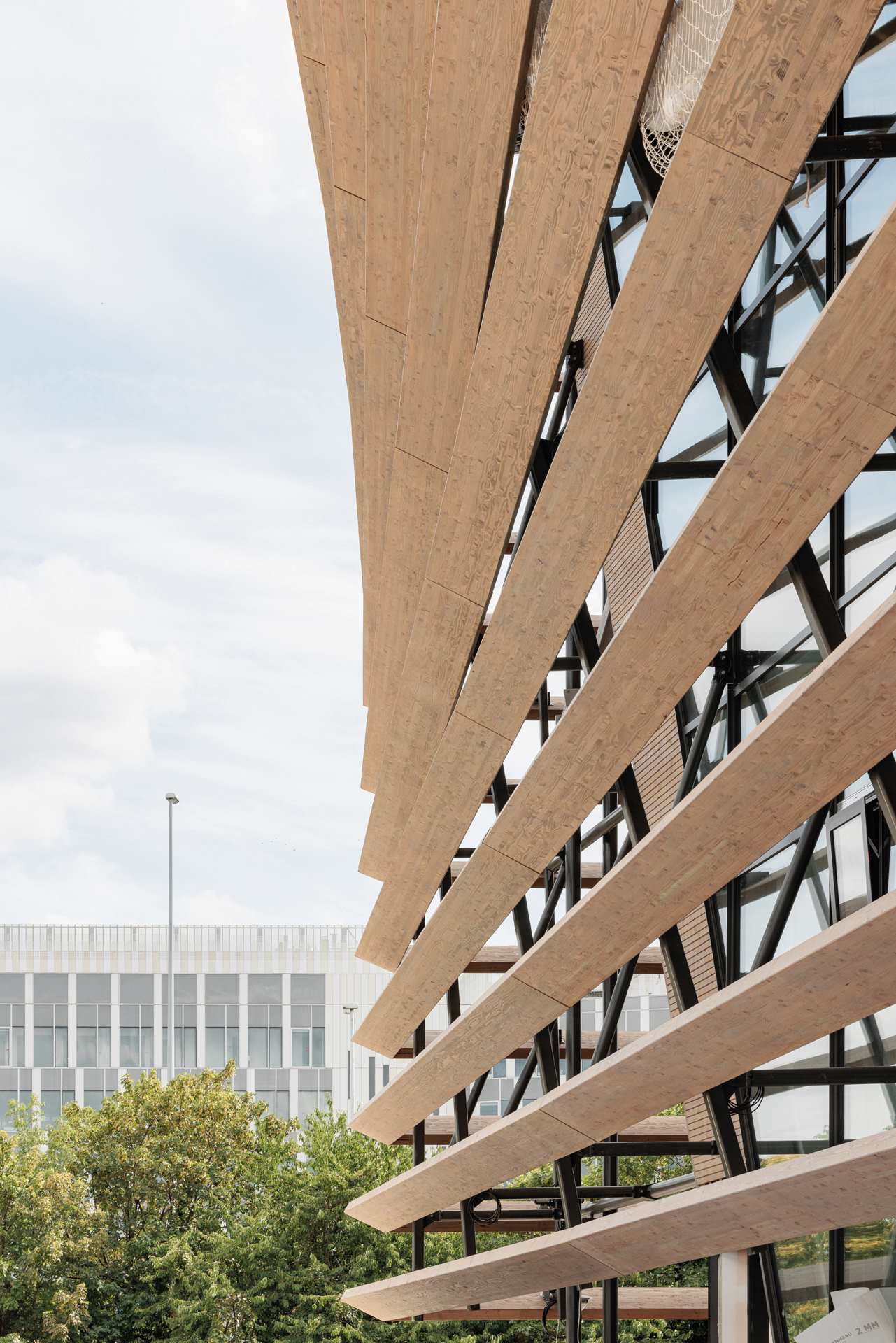
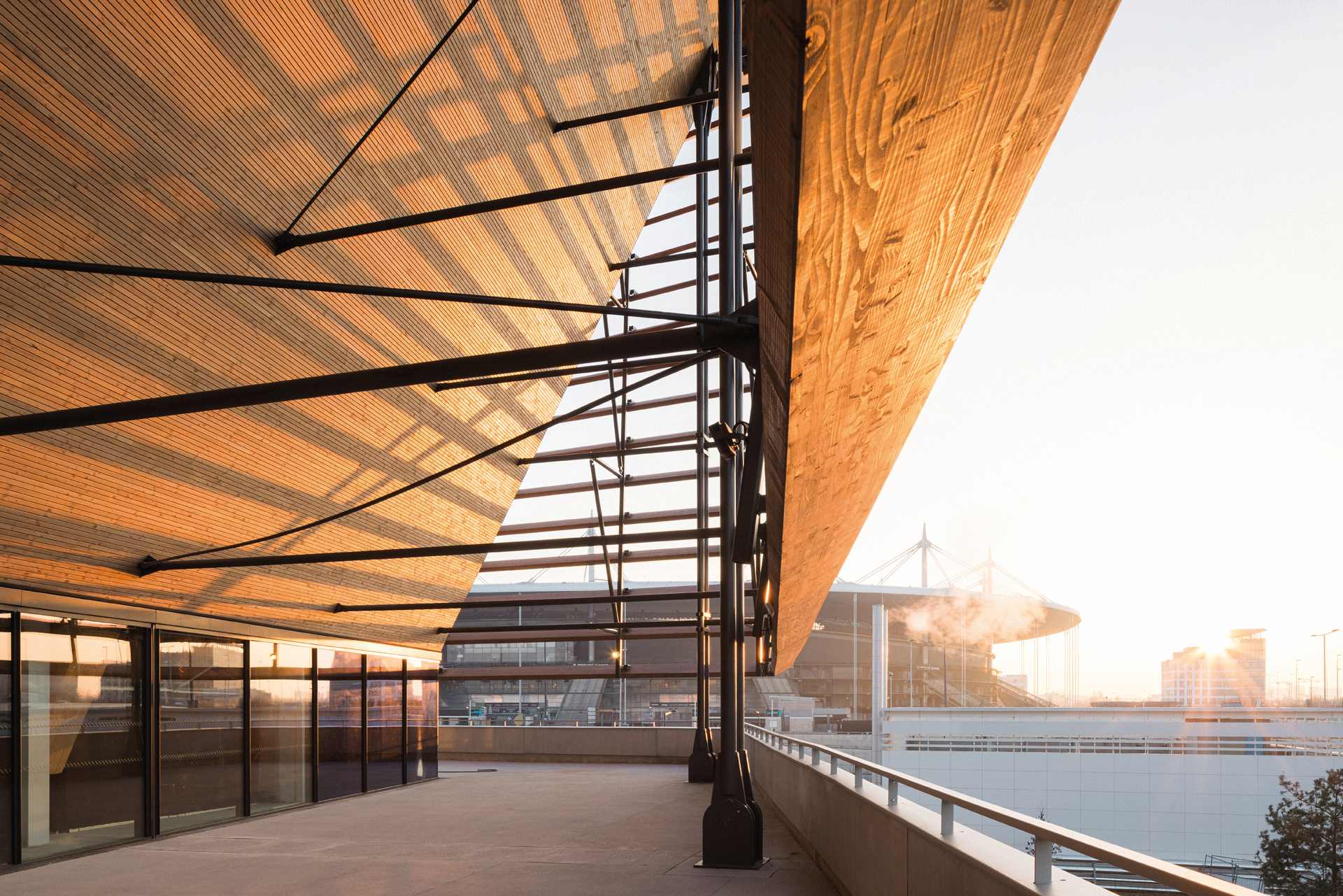
The Olympic arena under the roof can host 5,000 spectators around a multifunctional pool. The 6,000 seats, made from recycled plastic bottles, will halve post-Games, replaced by recreational spaces like bouldering walls and padel courts, as well as a basketball and football field. Considering the carbon footprint, the architects reduced volume, squeezing the roof as low as sight-lines allowed. The venue, mainly for water polo, artistic swimming and diving (with main swimming events are held at a temporary pool in La Défense Arena), features a combination of a 50-meter pool, but with movable walls for flexibility to make two 25 metre pools and a concert area with 500 seats. The diving pool’s depth has also been adjusted to reduce water usage by 25%.


Energy consumption challenges, particularly water treatment and heating, are addressed with a smart energy system. The solar roof, one of France’s largest, will cover 20% of required electricity production, with all energy used on-site. By reducing the energy demand and creating a smart energy system, 90% of the needed energy can be provided with renewable or recovered energy.
The future potential
Beyond meeting environmental regulations, the Aquatics Centre enhances sustainability and biodiversity. Surrounded by vegetation, it fosters a liveable, healthy district for Saint- Denis residents and will host a wide range of sports and events, indoors and outdoors. ‘As designers, our aim was to create more with less; less volume, less materials, less energy, more connection, more inspiration to exercise, more nature, more flexibility, more beauty,’ says Mériaud. www.venhoevencs.nl/projects/olympic s-aquatics-centre-paris-2024 www.a234.fr/en